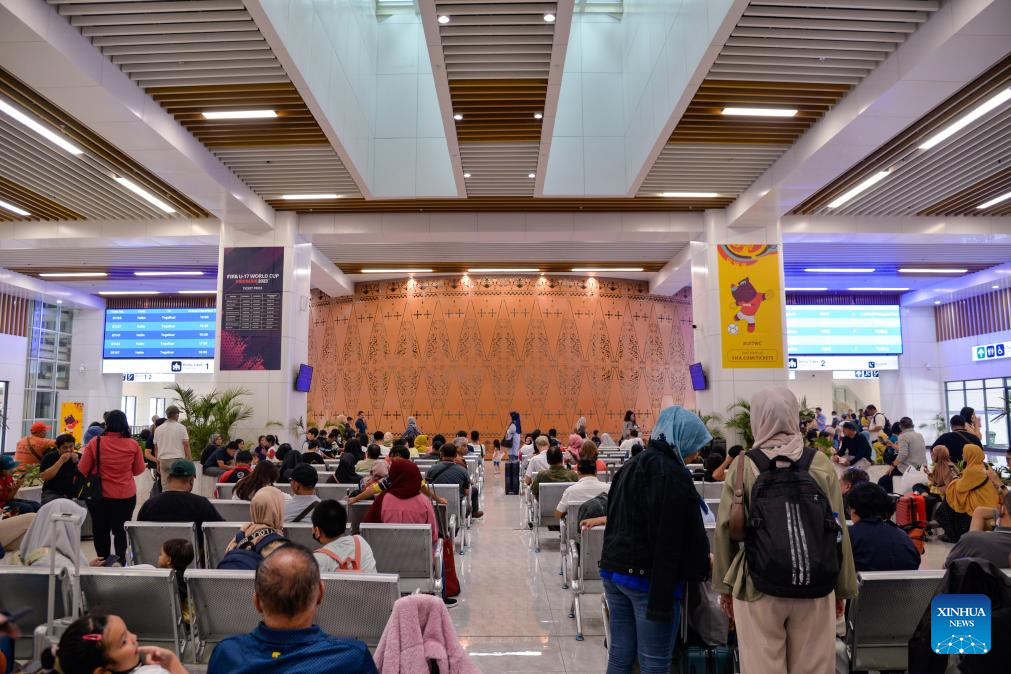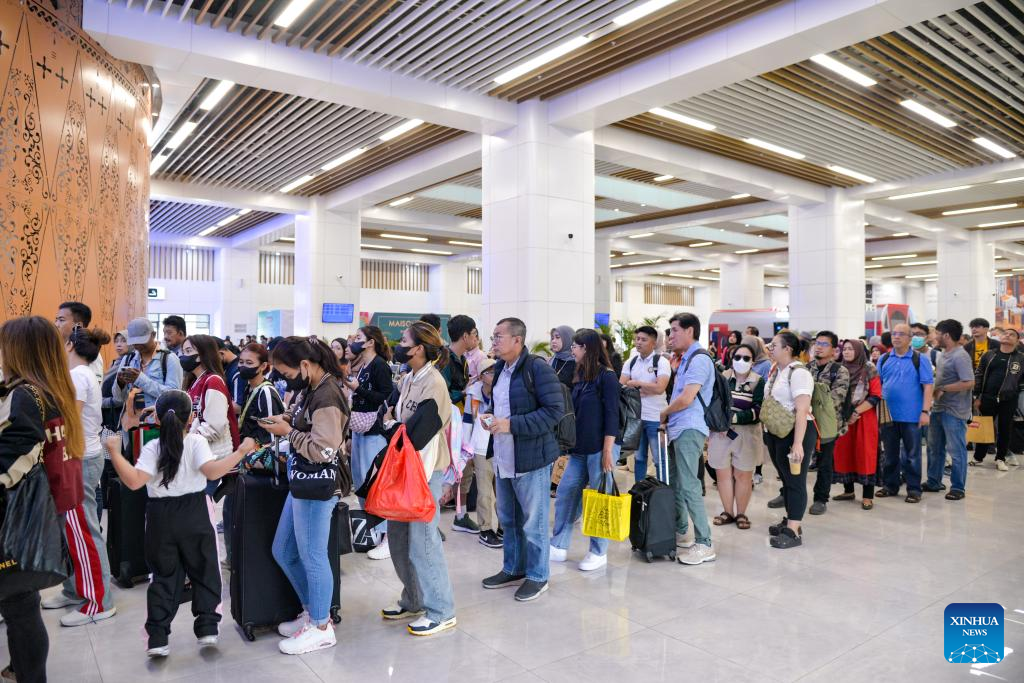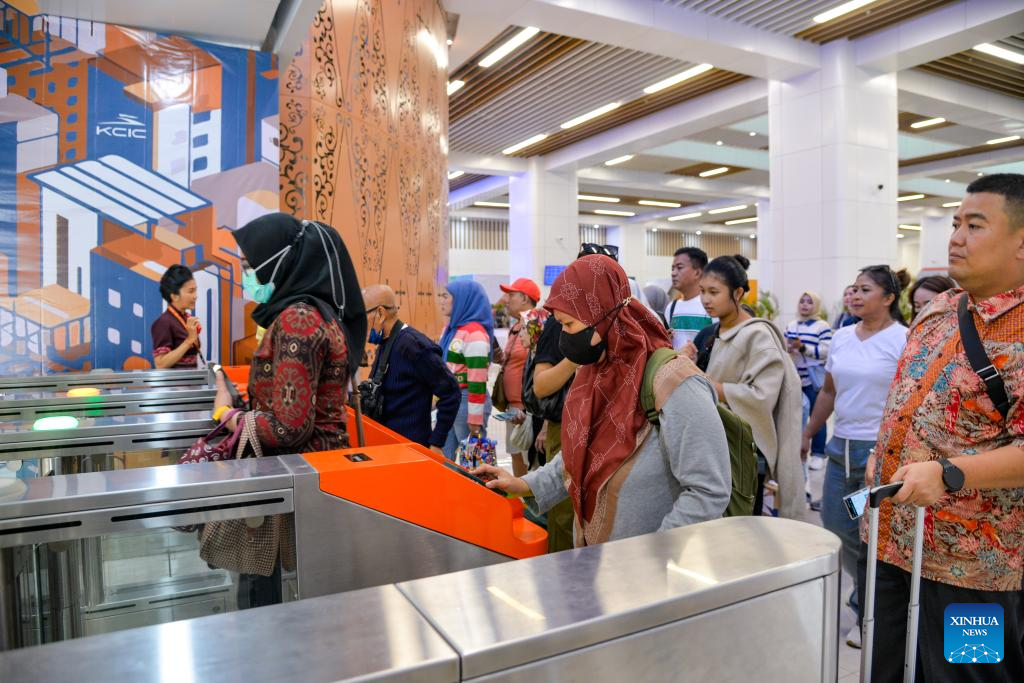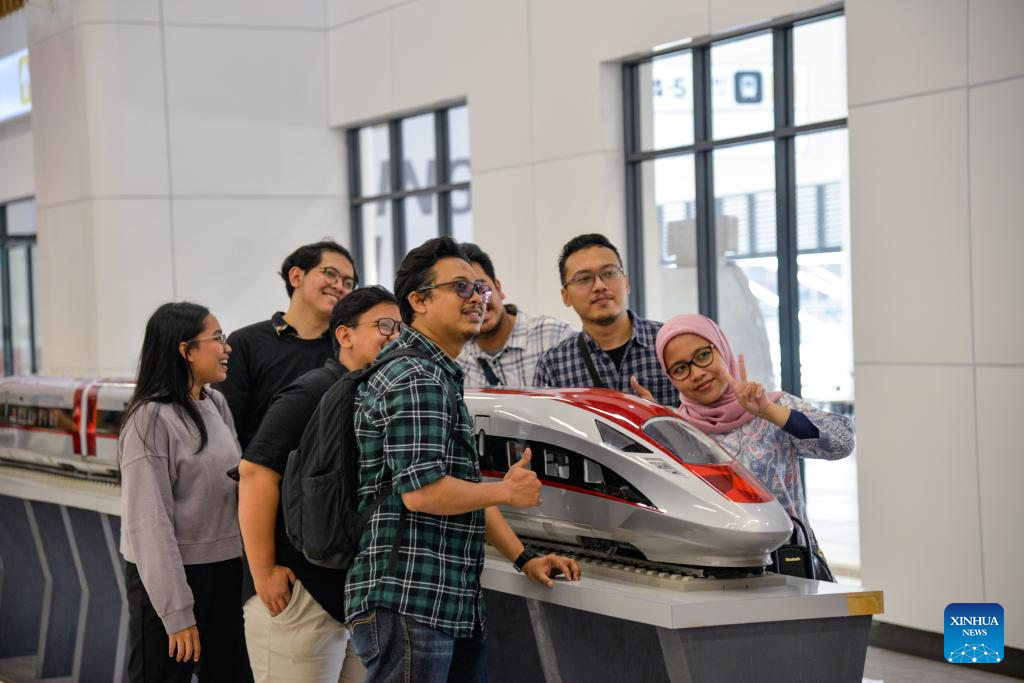
Passengers wait in the waiting hall of Halim Station in Jakarta, Indonesia, Nov. 17, 2023. According to PT Kereta Cepat Indonesia-China (KCIC), a joint venture consortium between Indonesian and Chinese state-owned firms that constructs and runs the Jakarta-Bandung high-speed railway, trains have carried about 383,000 passengers on the railway since the commercial operation started, with the highest daily occupancy rate reaching 98.7 percent. (Xinhua/Xu Qin)
by Nurul Fitri Ramadhani, Wang Aona
JAKARTA, Nov. 17 (Xinhua) -- The services of the Jakarta-Bandung high-speed railway (HSR) in Indonesia, locally known as Whoosh, have brought lots of joy for the public in the world's fourth-largest populous nation since it was officially launched about a month ago.
For 36-year-old Bagus Ahli Ramadhan, who works in Jakarta with his family living in Bandung, West Java province, the presence of the train has been a great blessing.
He has canceled the plan to move his pregnant wife to live in Jakarta because now he can travel between the two cities in a very short period of time.
"I usually go back to Bandung once every two weeks to visit my wife, but now taking the HSR has made it easier. After office hours I can go to Bandung, which only takes 46 minutes, then in the morning I would return to Jakarta before office hours. That's amazing," Ramadhan told Xinhua recently at the Halim station in the country's capital Jakarta.
The first HSR in Indonesia as well as in Southeast Asia was officially inaugurated on Oct. 17. With a design speed of 350 km per hour, it connects Halim station in Jakarta to Tegalluar station in Bandung.
According to PT Kereta Cepat Indonesia-China (KCIC), a joint venture consortium between Indonesian and Chinese state-owned firms that constructs and runs the HSR, trains have carried about 383,000 passengers on the railway since the commercial operation started, with the highest daily occupancy rate reaching 98.7 percent.
The public enthusiasm was so high that KCIC needed to intensify the travel schedule up to 28 trips per weekday and 36 trips per day on weekends, from the previous 14 trips.
According to KCIC, 2.3 percent of the Whoosh passengers bought first-class tickets, 4.2 percent for business-class tickets, and 93.5 percent for premium economy-class tickets.
Many of the passengers took the train out of curiosity to know what it felt like to travel by a transportation mode much faster than conventional trains.
Enny Nuraeni, a 49-year-old, was among thousands of Whoosh passengers at the Halim station on Thursday. Seeking a novel experience, she and her friends went directly to the Halim station after getting off duty.
She described the first look of the train as sophisticated.
"We took the premium economy class, but it felt like first class. The train body looked thinner than a conventional train, but inside it felt more spacious," she said, after taking photos with the train as the background as many other passengers did.
Previously, Nuraeni rarely went to Bandung for vacation because going to Bandung cost her too much time. "Not to mention that the trip by train or by car was exhausting. We would have been tired even before arriving in Bandung," she said.
"But now I think Bandung has become my first choice for a weekend to escape from busy Jakarta," she added.
The Jakarta-Bandung HSR was expected by many to boost tourism in West Java. To further fuel the public interest, KCIC offered a number of promotions, including free entry to several famous tourist destinations in Bandung, such as Dusun Bambu, Floating Market Lembang, and the Great Asia Africa. HSR passengers only need to show their Whoosh tickets at the entrance of each destination.
Also, on Thursday, Indonesia's Vice President Ma'ruf Amin took the high-speed train for a work visit in Bandung.
"It felt very comfortable. I just sat for a while and then I arrived. I almost couldn't feel the traveling. We should be grateful for having this technology with us," Amin said. ■

Passengers wait in line to check in for a train of the Jakarta-Bandung high-speed railway at the waiting hall of Halim Station in Jakarta, Indonesia, Nov. 17, 2023. According to PT Kereta Cepat Indonesia-China (KCIC), a joint venture consortium between Indonesian and Chinese state-owned firms that constructs and runs the Jakarta-Bandung high-speed railway, trains have carried about 383,000 passengers on the railway since the commercial operation started, with the highest daily occupancy rate reaching 98.7 percent. (Xinhua/Xu Qin)

Passengers check in for a train of the Jakarta-Bandung high-speed railway at the waiting hall of Halim Station in Jakarta, Indonesia, Nov. 17, 2023. According to PT Kereta Cepat Indonesia-China (KCIC), a joint venture consortium between Indonesian and Chinese state-owned firms that constructs and runs the Jakarta-Bandung high-speed railway, trains have carried about 383,000 passengers on the railway since the commercial operation started, with the highest daily occupancy rate reaching 98.7 percent. (Xinhua/Xu Qin)

Passengers pose for photos with a model of a high-speed train of the Jakarta-Bandung high-speed railway at Halim Station in Jakarta, Indonesia, Nov. 17, 2023. According to PT Kereta Cepat Indonesia-China (KCIC), a joint venture consortium between Indonesian and Chinese state-owned firms that constructs and runs the Jakarta-Bandung high-speed railway, trains have carried about 383,000 passengers on the railway since the commercial operation started, with the highest daily occupancy rate reaching 98.7 percent. (Xinhua/Xu Qin)



